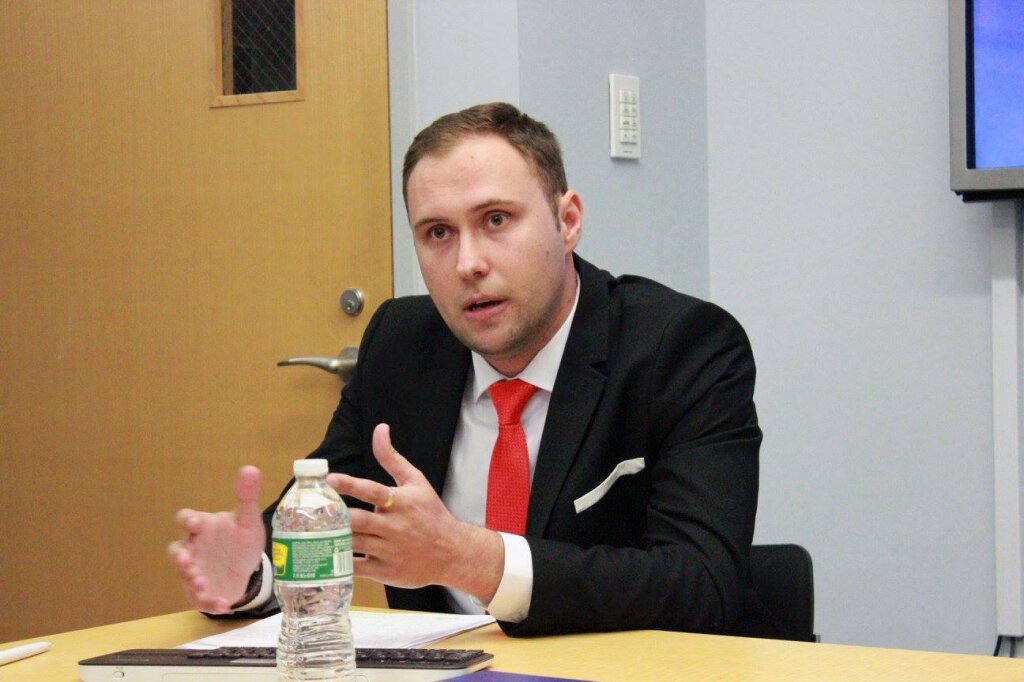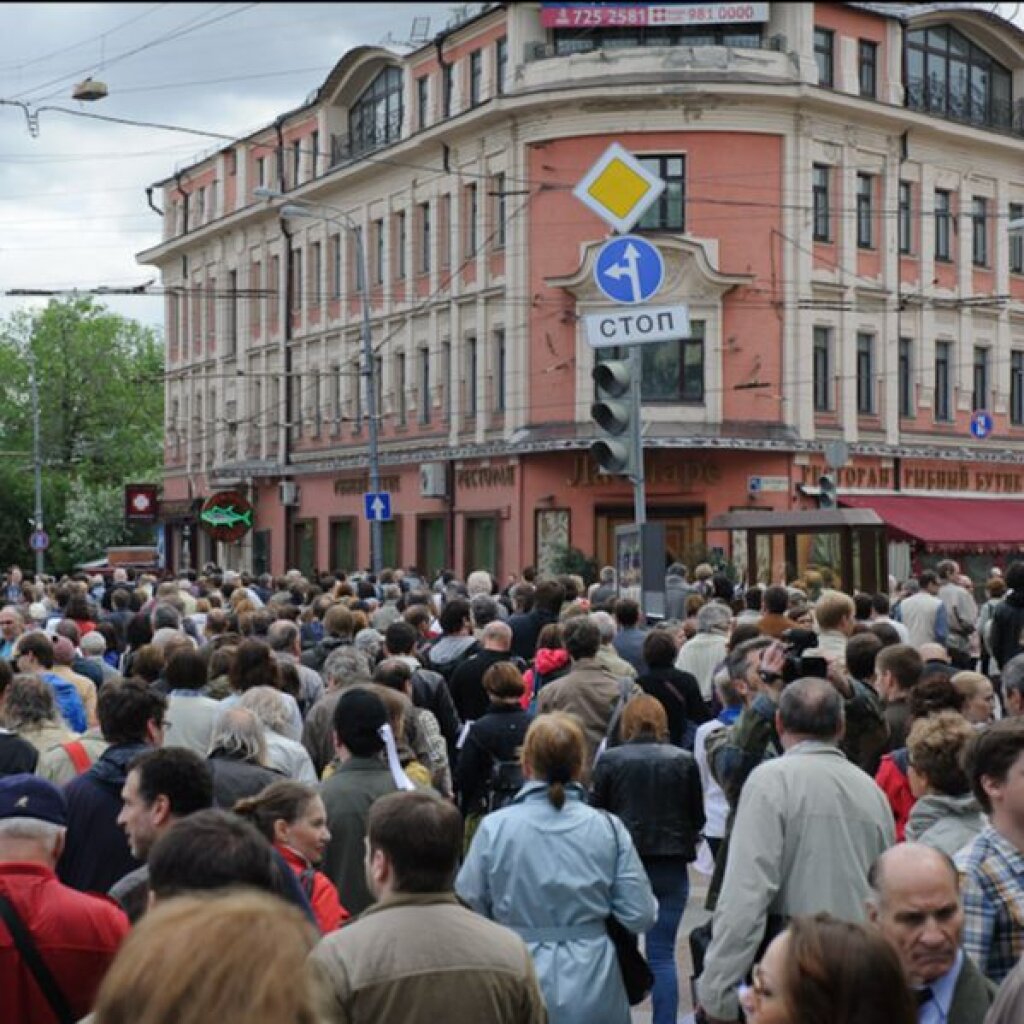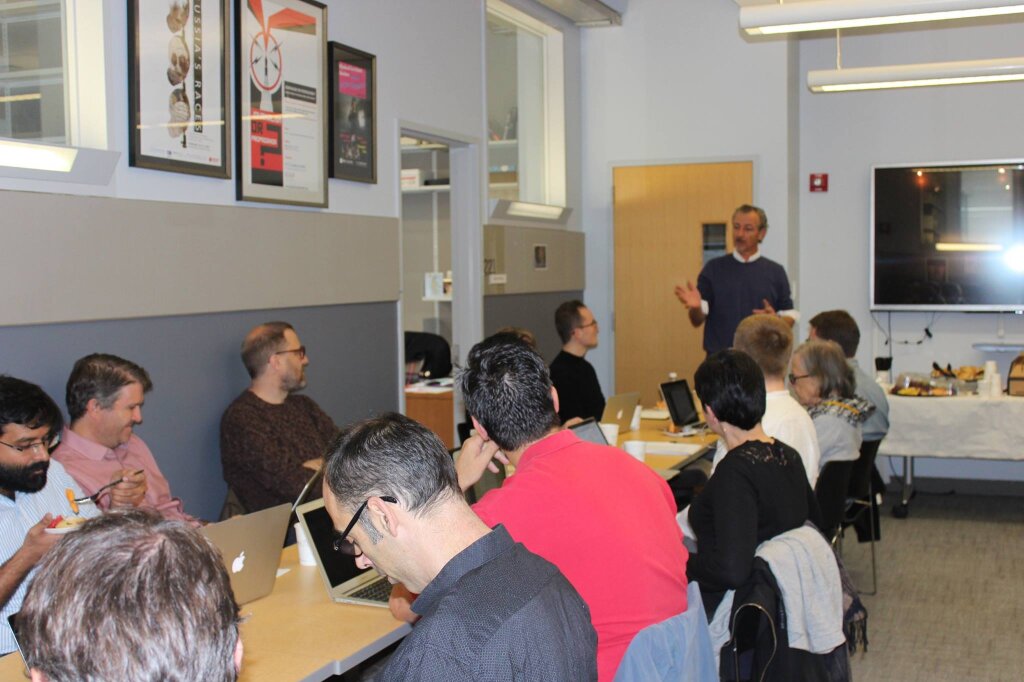On October 27, 2015, the NYU Jordan Center for the Advanced Study of Russia welcomed Maxim A. Suchkov, a Fellow at the Institute for Strategic Studies and an Associate Professor at Pyatigorsk State Linguistic University’s School of International Relations, for a session of its Fall 2015 Colloquium Series. Suchkov delivered a talk titled “After Ukraine: Scenarios for US-Russia Relations in the post-Soviet space.”
The speaker noted that over the past 25 years, the Soviet space has been an area of uncompromised rivalry between Russia and the West. He also pointed out that after a temporary relaxation in the relations between Russia and the United States with the the reset policy spearheaded by the Obama administration, we are currently witnessing a return to a confrontational relationship in the aftermath of the crisis in Ukraine.
Suchkov illustrated the results of his research based on interviews with American and Russian experts and decision makers. He identified four different interpretations of the current state of affairs. He described the first as a “narrative of the New Cold War,” pointing out that the unspoken rules that regulated relations between the Soviet Union and the United States during the Cold War no longer apply in the current period. This represents a real danger, since the boundaries of what is acceptable or not are not clearly defined. “It does not give you a clear limit,” he said. The second interpretation—the “long-term confrontation” model—relies on a view of the world as interconnected and the belief that the current stand-off between the United States and Russia is not over ideology, but rather over energy, geopolitics and national security interests. Suchkov’s third model sees the two countries as “predestined foes” that maintain irreconcilable interests. “Since the breakup of the USSR and dismantling of the bipolar order, Russia and the United States have never been true partners,” Suchkov added. The fourth interpretation draws on the narratives of the “new norm” and the “cyclic nature” of relations, both of which suggest that the two parties should adjust to the new situation.
Suchkov highlighted that each model holds some truth, and that the systemic problems in U.S.-Russian relations pose major challenges to cooperation. He noted that the only area of parity between the two countries is in their nuclear potential. Even though at the moment Russia faces internal and peripheral challenges, “Russia still possesses the capacity to dismantle US initiatives,” he said.
Suchkov then moved on to a discussion of the ways in which Russia and the United States perceive one another. One way in which the two countries tend to read each other’s behavior is by viewing it as a reflection of their declining powers. This is expressed by the general awareness held by Americans of Russia’s economic weaknesses and the Russian view of America as a “colossus with clay feet.” He also pointed to a mutually-held belief that the other is responsible for causing a rift between the two of them, which narrows the opportunity for a “marriage of interest.” Both countries believe the other to be focused on fomenting global insecurity: experts in the United States believe Russia to be a “pioneer in troublemaking” as much as Russians believe that the US is an out-of-control power that is too eager to throw its weight around in the international arena.
Suchkov then moved to a discussion of the challenges that complicate the relationship between Russia and the United States. The speaker divided these obstacles between “objectives,” aspects that are systemic and hard to change, and “subjectives,” the spoilers that tend to problematize this relationship. Among the objectives, Suchkov included the trust deficit, the differences in political and cultural systems, the tendency to attribute decision-making to a few political figures and the different uses and values embodied in the two systems they represent. Their respective ideologies “are frequently used to galvanize public opinion and back up the course of the respective administrations,” he said. He then listed various examples of spoilers in the relationship, such as the growing lack of interest in studying one another, the “great power inertia” (a certain indulgence in long-term rivalry not driven by specific disagreements), the strategic shortsightedness of the ruling elites, and the manipulation by third party elites.
Looking towards the future, Suchkov noted that an “objective rivalry in certain areas is inevitable,” but said that it is important that this doesn’t turn into an adversarial stand-off. He also identified two areas with particular potential for trouble—the uncertain status of post-Soviet states and existing frozen conflicts—and three possible scenarios: growing confrontation, stable instability, and limited competition with cautious cooperation.
In the ensuing Q&A, NYU Professor of Political Science Joshua Tucker noted the incongruity in Suchov’s presentation between the idea that Ukraine was not the cause of the current state of U.S.-Russian affairs and the fact that the outcomes of the different scenarios—as Suchov had presented them—seemed to be strongly dependent on how the situation in Ukraine was ultimately resolved. Suchkov replied that he believed that Syria and the Middle East were more pressing issues than Ukraine in defining the present relationship between Russia and the United States. Other questions touched upon the role of Central Asia, the reliance on Islamic extremism rhetoric and the viability of the long-term confrontation model.



